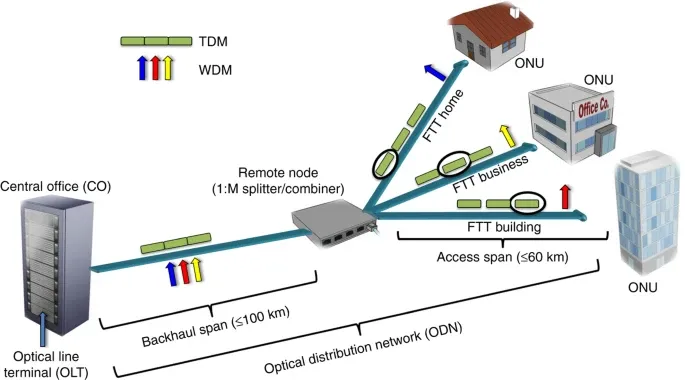The Ultimate Overview to Fiber Optic Safety Equipments for Your Service
In an age where safety concerns are paramount for services, understanding the intricacies of fiber optic technology can be transformative. This guide outlines how incorporating fiber optic safety systems not just boosts data defense yet additionally offers benefits like resistance to disturbance and real-time monitoring capabilities. As organizations review their security needs, it ends up being critical to think about the setup process and the current innovations in the area. What particular elements should be prioritized when selecting the appropriate system, and just how can businesses ensure they make one of the most enlightened choices?
Comprehending Fiber Optic Technology

The core of a fiber optic cable television contains a slim glass or plastic center, surrounded by a cladding layer that shows light back into the core. fiber optic security system. This layout guarantees minimal loss of signal stamina, also over extensive distances. There are two key kinds of fiber optic cables: single-mode and multi-mode. Single-mode fibers are designed for long-distance transmission, while multi-mode fibers are suitable for much shorter distances, usually utilized within buildings.
Optical fiber are not just faster yet also extra safe than typical electrical wiring. Their integral resistance to electro-magnetic interference and the problem of taking advantage of the signal without discovery make them a favored selection for companies prioritizing information stability and protection. As companies progressively rely upon secure and efficient interaction systems, comprehending fiber optic modern technology comes to be vital for notified decision-making.
Key Advantages of Fiber Optic Security
When thinking about security choices for a company, the advantages of fiber optic systems are specifically compelling. Fiber optic innovation supplies outstanding data transmission rates and data transfer ability, making it excellent for taking care of high-resolution video feeds from monitoring video cameras. This capability ensures that safety workers receive real-time information, boosting general feedback times to possible safety and security dangers.
Additionally, fiber optic cords are naturally resistant to electromagnetic interference, which can endanger the honesty of traditional copper-based systems. This resistance guarantees that the information sent remains safe and secure and undisturbed, providing an extra trustworthy security framework. Furthermore, fiber optics are much less at risk to physical damage, as they are made from glass as opposed to steel, minimizing upkeep prices and downtime.
An additional substantial advantage is the increased scalability of fiber optic systems. As company needs evolve, fiber networks can be conveniently increased to accommodate added safety tools without considerable overhauls to the existing framework. Fiber optic systems supply improved cybersecurity features, including security capabilities that secure sensitive information from unapproved gain access to. Collectively, these benefits make fiber optic security systems a durable choice for organizations looking for to improve their safety procedures.
Setup Process and Considerations
Considering the intricacies entailed, the installation procedure of fiber optic security systems requires web link mindful planning and implementation. The preliminary More Help action entails an extensive website analysis to recognize optimal locations for cabling and tools. This evaluation should think about environmental elements, existing facilities, and possible susceptabilities.

Additionally, the setup has to abide by regional structure codes and industry standards. This might include collaborating with numerous stakeholders such as structure supervisors, IT teams, and safety workers to make sure smooth integration with existing systems.
Post-installation, strenuous testing is necessary to confirm system performance and recognize any kind of issues that might develop. By prioritizing these considerations during the setup procedure, organizations can ensure a durable and efficient fiber optic safety and security system that fulfills their certain safety and security demands.
Most Recent Advancements in Fiber Optic Protection
Recent improvements in fiber optic technology have considerably boosted the capacities of protection systems for businesses. One of the most significant innovations is the combination of fiber optic sensing units that can spot vibrations and breaches along the border of a facility. These sensing units supply real-time tracking, allowing rapid reaction to potential violations.
In addition, the development of dispersed fiber optic sensing modern technology permits the continual surveillance of large locations with a solitary fiber wire. This technique not just lowers installment costs however likewise improves the integrity of monitoring systems by getting rid of the demand for numerous, separate sensors.
In addition, improvements in multiplexing strategies have allowed businesses to transfer substantial quantities of data over fiber optic networks, improving the capabilities of video surveillance systems. High-definition video feeds can currently be sent over long ranges without loss of high quality, guaranteeing that safety and security workers have access to clear and actionable info.
Finally, making use of expert system (AI) along with fiber optic systems is reinventing risk discovery. AI formulas can examine information from fiber optic networks to recognize uncommon patterns or behaviors, permitting proactive protection measures. These developments helpful resources jointly represent a significant leap forward in fiber optic safety and security innovation.
Selecting the Right System for Your Company
Picking the appropriate fiber optic safety system for your organization is essential for guaranteeing optimal protection and peace of mind. To make an educated option, examine your details safety and security requirements, thinking about elements such as the size of your facilities, the nature of your procedures, and prospective vulnerabilities.
Begin by examining the level of safety required; for example, risky settings might necessitate advanced systems with incorporated surveillance and invasion discovery abilities. Next, take into consideration scalability; as your organization expands, your protection system should be qualified of broadening to suit increased needs without significant overhauls.
Additionally, check out the dependability and efficiency of different systems. Try to find service providers with established track records and customer endorsements that attest to their service quality. It's additionally recommended to inquire regarding the modern technology's compatibility with existing framework, making sure a smooth assimilation procedure.
Verdict
In final thought, fiber optic safety systems offer a robust remedy for boosting organization safety infrastructures. The most recent advancements further strengthen the performance of these systems, ensuring that services remain secure and adaptable in an ever-evolving hazard landscape.